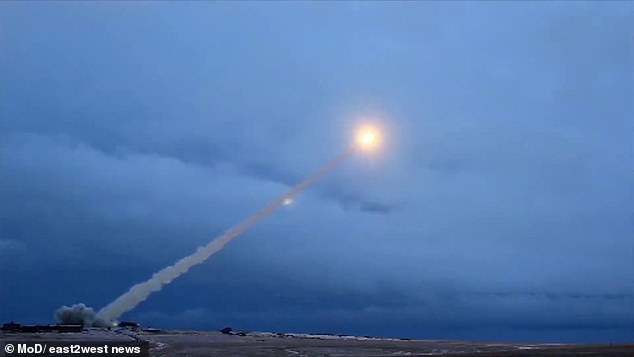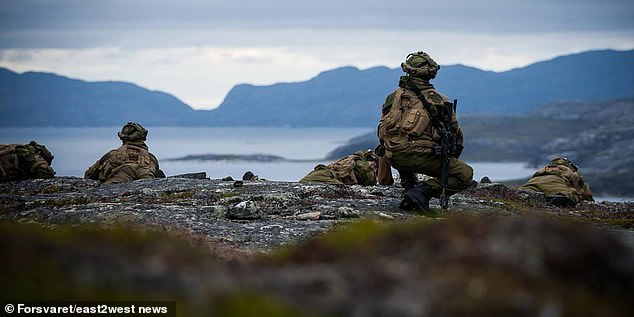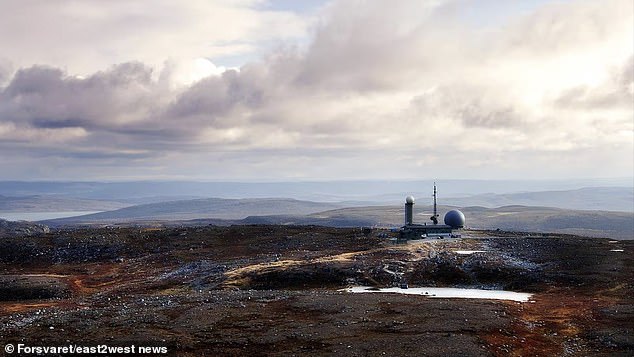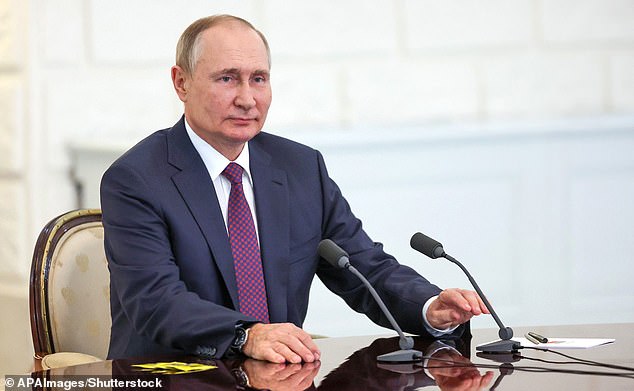Radiation levels mysteriously spike along Norway’s border with Russia
Today it was announced that traces of radioactive cesium-137 have been measured along the border between Norway and Russia.
Authorities say radiation levels are “clearly” higher than normal and the cause of the mysterious spike is unknown.
There is some suspicion that it could be related to the Russian Pankovo testing ground for the Burevestnik, a nuclear-powered cruise missile, on the Novaya Zemlya archipelago.
The experimental weapon, known as Vladimir Putin’s “Flying Chernobyl,” can stay aloft for days or even weeks, probing weak spots in Western defenses.
However, there could be other reasons for the radioactive peak, the Barentsz observer.
Russia’s Pankovo test site for the Burevestnik nuclear-powered cruise missile is located on the Novaya Zemlya archipelago (general view)

In 2019, the Russian State News Agency published a video allegedly showing a test of the Burevestnik missile (photo)
The Norwegian Radiation and Nuclear Safety Authority (DSA) confirmed that the levels are above the norm, but still ‘very low’.
“The levels are clearly higher than normal, but pose no risk to humans or the environment,” said Bredo Møller from the DSA emergency unit in Svanhovd.
The radioactive Cesium-137 appeared between September 9 and 12.
Norway shares a 195-kilometer border within the Arctic Circle with the heavily militarized Murmansk region of Russia.
The outlet stressed that top-secret activities have been taking place at the Burevestnik test site in recent weeks.
There are no official reports that the Burevestnik has been tested, but clues can be found in daily updated satellite images of the Arctic archipelago.
‘The Barents Observer has spotted several cargo ships and special vessels in the waters off Pankovo over the summer, and in recent weeks Rosatom’s two large Il-76 transport aircraft have been periodically parked at the airfield in Rogachevo on Novaya Zemlya.
“It is believed that the blue aircraft are conducting operations related to the Burevestnik tests.”
Yet there are also “a few nuclear-powered icebreakers” moored around Murmansk, Putin’s Arctic capital, and numerous maritime reactors aboard submarines in the region, home to Russia’s Northern Fleet.

File photo shows Norwegian soldiers near the border with Russia
Filters from Viksjøfjell and Svanhovd in Norway – close to the Russian border – are analysed once a week.
The amount of cesium so far poses ‘no risk to humans or the environment.’
According to The Observer, it is ‘unlikely that such emissions come from an operational marine reactor at sea.
‘Small leaks of Cesium-137 occur more often during reactor start-up or maintenance or during the processing of spent fuel.’
More than a dozen of Burevestnik’s tests failed.
Seven people were killed in a 2019 test while trying to recover the downed, top-secret rocket.
Putin called them “national heroes” but gave no details about their deaths.

Filters at Viksjøfjell and Svanhovd in Norway – close to the Russian border – are analyzed once a week (general overview)
The Russian dictator considers the Burevestnik a revolutionary weapon with unlimited range.
The Kremlin sees it as a low-flying “stealth” cruise missile that cannot be intercepted by existing Western air defenses and cannot deliver nuclear warheads anywhere in the world.
Putin called it “a radically new type of weapon” with “unlimited range and maneuverability.”
A report by the Nuclear Threat Initiative, a nonprofit arms control group, found that Russia conducted 13 known tests between 2017 and 2019, all of which were unsuccessful.

A 2019 test led to the deaths of seven people trying to recover the crashed top-secret rocket. Putin called them “national heroes” without giving details of their deaths
Putin unveiled the weapon in 2018. It was one of five groundbreaking missile systems that he said were better than Western models.
According to the Moscow Times, the Burevestnik had been nicknamed the “Flying Chernobyl.”
“Previous launch attempts failed,” the news outlet said.
‘According to US intelligence, the missile never got further than 35 km [22 miles]The longest flight lasted only two minutes.’
The seven people who died in 2019 were all from Sarov, a closed nuclear city where foreigners are not welcome.
The rocket is believed to be launched by a solid-fuel rocket engine.
Then a small nuclear reactor is activated in the air, making it possible to remain in the air almost indefinitely and pose a threat to Western countries.
